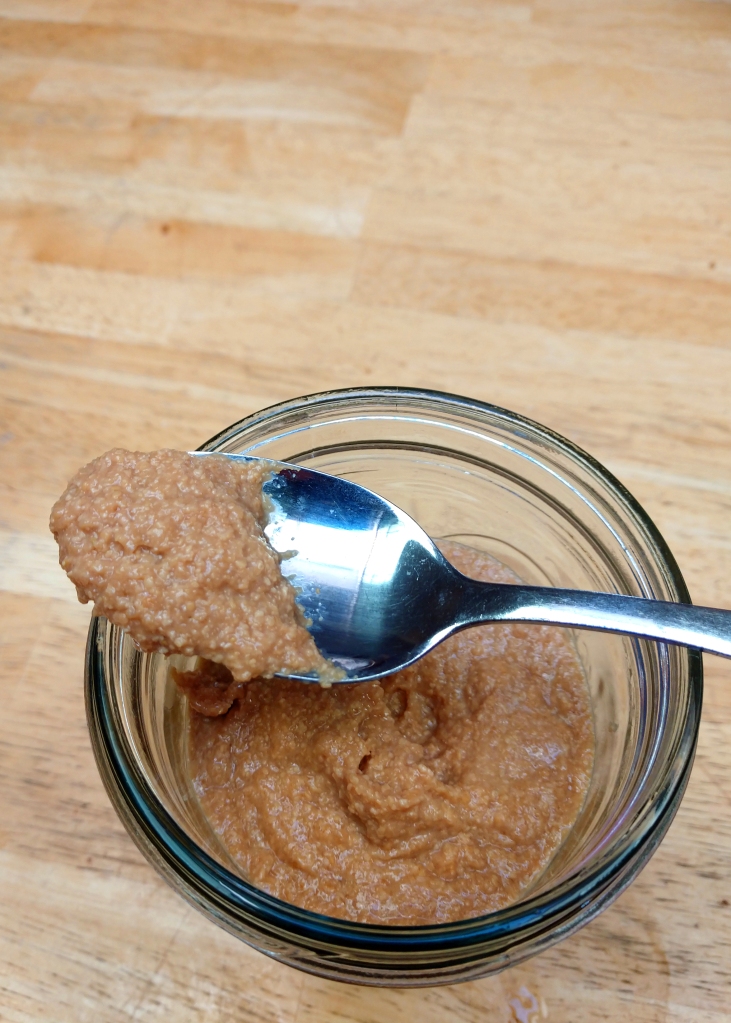
I’m a fan of making your own mustard. It’s honestly one of the easiest condiments to make, it’s very safe, because mustard, on its own, is so naturally antimicrobial, and the variations are practically endless. I have more background on making your own mustard, along with a beer mustard recipe here.
I use Dijon mustard in various recipes that call for it, and as an emulsifier in salad dressings. Many years ago now, I went looking for a DIY Dijon mustard recipe. Traditional Dijon (named for its city of origin in France) is made with verjuice, the acidic juice from unripe grapes. (Verjuice has been on my list to make for a while now). This is NOT that recipe.

This recipe, which I affectionately call “Country Dijon” is ground mustard mixed with an alium and herb infused white white/vinegar reduction. This recipe is originally attributed to Sara Moulton, from her cookbook “Sara Moulton Cooks At Home“. I’ve taken a few liberties with the ingredients and procedure. The original included a lot of mix and cool, and then mix and heat and just seemed overly fussy to me. I also make this from fresh ground yellow mustard seed, rather than store bought mustard powder. This means mine has a more course texture, as the mustard “flour” hasn’t been sifted to remove seed coat/bran.



Country Dijon Mustard
A rustic farmhouse version of this famous standard
Ingredients
- 3⁄4 cup mustard powder
- 1⁄4 cup water, very cold
- 1 cup apple cider vinegar
- 1 cup dry white wine
- 1⁄2 cup onion, chopped
- 1⁄4 cup shallot, chopped
- 3 tablespoons garlic, chopped
- 1 bay leaf
- 2 teaspoons whole black peppercorns
- 4 juniper berries, whole (optional)
- 2 tablespoons fresh lemon juice
- 2 teaspoons kosher salt
- 2 teaspoons sugar
Directions
- Grind yellow mustard seed in a spice grinder until fully ground and uniform. Measure out 3/4 cup of the mustard powder (3/4 cup of whole seed will give you way more than 3/4 cup of powder, as the grinding fluffs up the powder considerably. Alternatively, just buy 3/4 cup of yellow mustard powder).
- In a medium bowl, stir together mustard powder and very cold water to make a paste. Note: cold water increases the bite of the finished mustard. Mixture may be coarse and lumpy. Just make sure everything is moist. Set aside to hydrate.
- In a small saucepan, combine vinegar, wine, onion, shallots, garlic, bay leaf, peppercorns, and juniper berries and bring mixture to a simmer over moderate heat. Simmer mixture until reduced by two thirds, which depending on your pan and heat, should take about 15 minutes.
- Strain vinegar mixture and let cool. Toss solids. You should have between 2/3 and 1 cup of reduced liquid.
- Stir the strained cooled vinegar reduction into the mustard paste. (The addition of an acid sets the heat level). Add the lemon juice, salt and sugar and stir until smooth.
- Transfer the mustard mixture to a saucepan, bring to a simmer over low heat and cook for 15 minutes, stirring occasionally. Remove from heat and allow to cool. (I think this step is as much about sanitizing your sauce as it is to mellow and meld the flavors. If your tools and container were very clean, you could probably just skip this step if you wanted a sharper mustard. I don’t cook my beer mustard recipe).
- Add a touch of water if the mustard seems too thick.
- Transfer to a clean jar, seal tightly and stash in your refrigerator. The original recipe recommends letting it stand for 6 weeks at room temperature before using, but I think this is completely unnecessary. Your resulting mustard is good in the fridge for at least 6 months. Mine is often in there for over a year. I’ve never had it visibly go off.



© Miles Away Farm 2022, where I’m never going to put Dijon on a corn dog, but do love it in a salad dressing or sauce. Want more content? Sign up for a monthly newsletter to your email inbox HERE.


1 comment
Comments feed for this article
February 15, 2022 at 4:49 am
Dorothy's New Vintage Kitchen
The mustard sounds delightful! I’m definitely going to give this a try. Love your blog and all the knowledge you bring to us.